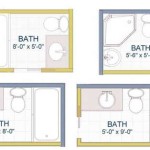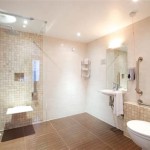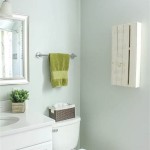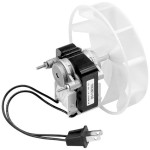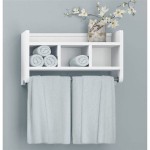ADA Bathroom Grab Bar Requirements
Grab bars are essential safety features for bathrooms, especially for individuals with mobility impairments or those who are at risk of falling. The Americans with Disabilities Act (ADA) establishes specific requirements for grab bar installation in bathrooms to ensure accessibility and safety for all users. Understanding and adhering to these requirements is crucial for creating compliant and user-friendly spaces.
General Requirements
Placement: Grab bars must be installed near toilets, showers, and bathtubs to provide support and stability during use. They should be positioned within easy reach and at appropriate heights for users.
Size and Shape: Grab bars should be a minimum of 1.5 inches (38 mm) in diameter or have a U-shape with a minimum width of 1.25 inches (32 mm). They must be long enough to provide adequate support for the intended use.
Height: Grab bars for toilets should be installed 33 to 36 inches (840 to 915 mm) above the finished floor. For showers and bathtubs, they should be installed between 30 and 38 inches (760 to 965 mm) above the rim.
Anchoring: Grab bars must be securely anchored to the wall with concealed or exposed fasteners capable of supporting a minimum of 250 pounds (113 kg) of force. The anchors should be spaced no more than 16 inches (406 mm) apart.
Specific Requirements for Different Fixture Types
Toilets: Two grab bars are required for toilets. One should be installed behind the toilet, parallel to the wall, and the other should be installed on the wall adjacent to the toilet, perpendicular to the wall.
Showers: A minimum of two grab bars are required for showers. One should be installed horizontally near the shower controls, and the other should be installed vertically near the shower seat or bench (if present).
Bathtubs: Two grab bars are required for bathtubs. One should be installed horizontally on the wall opposite the bathtub controls, and the other should be installed vertically on the wall adjacent to the bathtub.
Additional Considerations
Slip Resistance: Grab bars should have a slip-resistant surface to prevent users from slipping or losing their grip.
Visibility: Grab bars should be a visible color that contrasts with the surrounding walls and fixtures to enhance visibility for users with low vision.
Maintenance: Grab bars should be regularly cleaned and inspected to ensure they are secure and in good working condition.
Conclusion
Understanding and adhering to ADA bathroom grab bar requirements is essential for creating safe and accessible spaces for all users. By providing proper support and stability, grab bars help prevent accidents and promote independence for individuals with mobility impairments. It is important for decorators, builders, and homeowners to ensure that their bathroom designs meet these requirements to create inclusive and comfortable environments.

Ada Toilet Grab Bar Placement Guide Commercial

Ada Toilet Grab Bar Placement Guide Commercial

Ansi Vs Ada Restroom Grab Bar Requirements Evstudio

Ada Bathtub Grab Bar Placement Guide Commercial

Ada Compliant Bathroom Grab Bars Rustic Steel Pipe Assessability 3 Piece Combination Or Single Handicap Toilet

Ada Bathroom Requirements Toilet Height Grab Bars Stall Accessories More Laforce Llc

Ada Grab Bar Requirements Specialists

Ada Requirements For Grab Bar Height In Bathtubs Oc Bars

Grab Bars In All Accessible Bathing Facilities Ada Guidelines Harbor City Supply

Ada Bathroom Grab Bar Requirements 2024 Inspection Orange County
